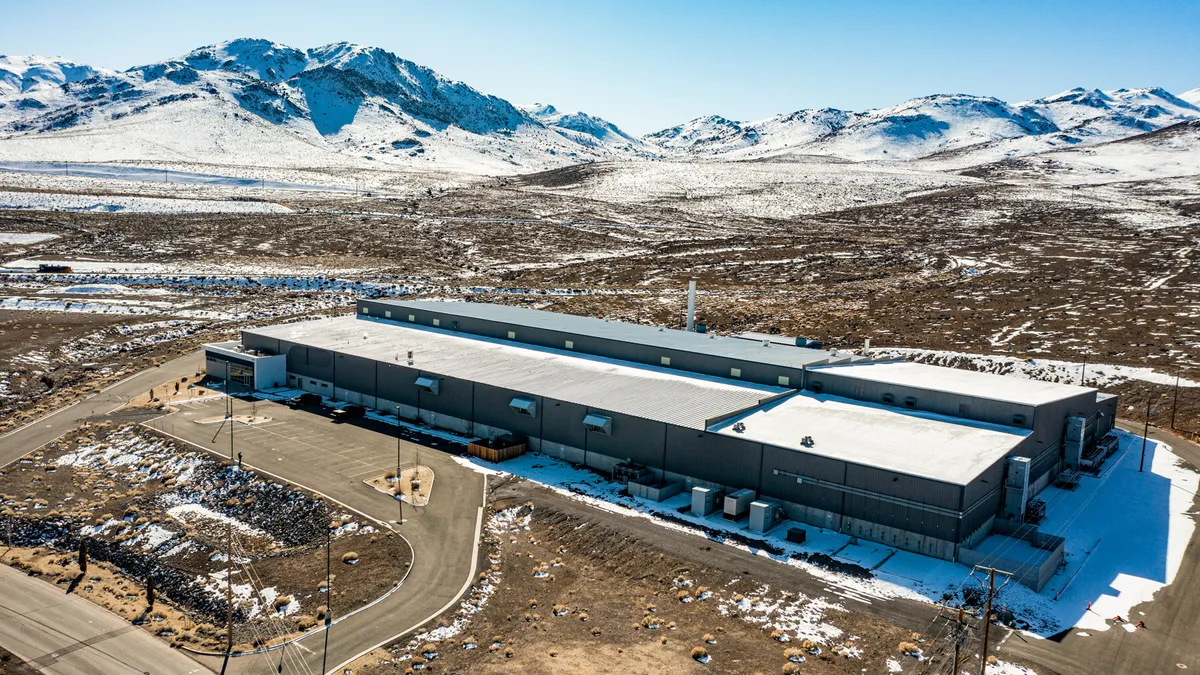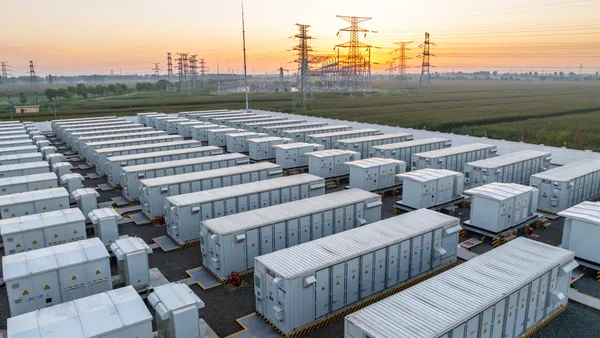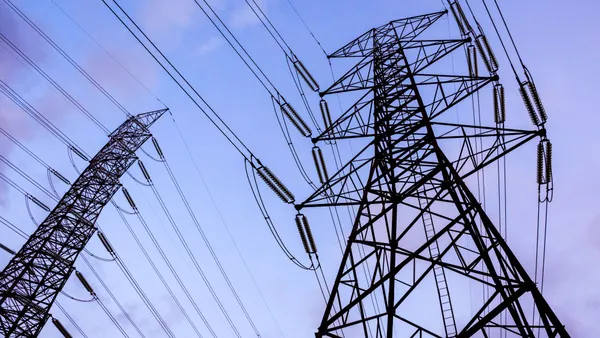Editor's Note: The following is a dispach from the final day of the 2015 Energy Storage North America conference from editor Gavin Bade. A writeup of the first two days of the conference is available here.
For many power sector observers, California utilities are the ideal partners for forward-thinking regulators looking to adapt the utility business model to the 21st century.
California's investor-owned utilities (IOU) proclaim their commitment to clean energy technologies — often in the pages of this very publication — demonstrating how they’ve surpassed mandates, accepted more rooftop solar, or integrated large amounts of storage.
Utility executives provided apt examples in their keynotes at the Energy Storage North America conference on Wednesday, as Utility Dive reported. James Avery, the chief development officer for San Diego Gas & Electric (SDG&E), told the audience that his utility had surpassed each of California’s past renewable standards long before their due dates. Stuart Hemphill, a senior vice president at Southern California Edison (SCE), touted his utility’s massive storage buy last year. Meanwhile, Pacific Gas & Electric (PG&E), the third IOU in the state, spotlighted this week that it has more rooftop solar on its system than any other utility in the nation.
All these announcements could logically lead observers to conclude that California utilities have been proactive partners in helping set California’s ambitious clean energy goals. Not exactly, two veteran state legislators told Utility Dive at the conference.
State Sen. Ben Hueso (D), chair of the energy and utilities committee in the California Senate, ushered SB 350, the bill that set the state’s 50% RPS, through committee earlier this year. He said during a news conference that the utilities have always fought hard against any mandates behind closed doors, whether it was SB 350 or earlier efforts.
In this last legislative session, he said, the power sector alone “spent millions” to influence the system. “It’s about the survival of their industries,” Hueso said. “But for us, it’s the survival of our planet.”
Former assemblymember Nancy Skinner (D), echoed Hueso’s observations. Skinner, a longtime renewables advocate and author of AB 2514, the first state law to encourage grid-scale energy storage, said that the power industry doesn’t behave much differently than others in this respect.
“No industry likes mandates,” she said, noting that it took three legislative sessions to usher through the state’s previous 33% RPS, which was met with utility pressure behind closed doors.
California's new RPS, by contrast, was authored and passed in one legislative session, a feat that Skinner said cannot be overstated. Not only does the bill increase the renewables portfolio standard to 50% by 2030, it also specifically calls on utilities to deploy energy storage and combines the renewables goal with an aggressive efficiency standard.
So what changed to get such an aggressive bill passed so quickly? Hueso said much of it was pressure from the top. Gov. Jerry Brown’s executive orders in January setting a 50% RPS and aggressive efficiency goals set utilities “back in frustration,” and made them come to the table, Hueso said.
But it wasn’t just executive action that spurred them, Skinner said. For a while now, California utilities have faced a conundrum. It’s “not in their business model” to be delivering 50% renewables, she said, but the California public loves that the state is leading on clean energy adoption.
“Reputationally, our utilities both need to, and have, embraced that” mandate, Skinner said, noting that each IOU runs ads trumpeting their commitments to renewables. Facing that situation on SB 350, Skinner said the power sector “fought hard” against the 50% mandate, but wasn’t upfront with its opposition.
To some, however, the talk of back-room politics misses the larger point about the historic nature of SB 350’s passage. Clifford Rechtschaffen, a senior advisor to Brown, said the most important thing was that, in the end, “all of the utilities with the tiny exception of some northern California power agencies that had some qualms, they all supported SB 350.”
“They might have designed things differently, but they ultimately supported it,” he told Utility Dive at the conference. “That’s extraordinary. In 2002, it took two years to get a 20% RPS. In 2011, it took three years to get and three tries. This year, it took one year and the utilities were all on board to support it.”
Rechtschaffen said that while the utilities may have shown some resistance as the bill was working its way through the legislature, most of their concerns were operational in nature.
“They weren’t quarreling with the notion that we needed to get to 50%,” he said. “They had concerns about how best to do it — some of which we agree with and others which we aren’t completely in line with, but we’re working on those. Storage is a big part of the solution.”
Does that mean that California policymakers have convinced their utilities that renewables, storage and DERs are an opportunity and not a threat to their business models?
“I don’t know about that,” Rechtschaffen said, “but they’re on board. They’re on board with decarbonizing the economy. In stark contrast to the oil companies which resisted the petroleum reduction goal, the utilities did not. They supported and that’s very positive.”
All three California policymakers stressed that there’s more to do, especially since oil and gas industry pressure pushed them to eliminate ambitious goals in the bill to reduce petroleum use. But for now at least, the policymakers have declared victory.
The role of storage in California's renewable energy economy
In a keynote panel discussion after the press conference, the California policymakers highlighted energy storage as the technology that can make 50% renewables and beyond possible for California.
Once you get to that level of renewables, Rechtschaffen said, “storage is absolutely critical for grid integration. There’s no arguing about that."
Hueso said California is in a particularly favorable situation to take advantage of energy storage because it sits on vast reserves of lithium in his Senate district, which can be used for batteries. And it just so happens, he said, that extracting geothermal energy from many of these mineral-rich mountains yields lithium and other metals as a result. It’s a “very exciting concept” to think that California could ramp up its geothermal generation, and by doing so provide a steady supply of the precious metal to its battery manufacturers.
But the situation for storage, especially in the eyes of utilities, wasn’t always so rosy, Rechtschaffen said. Back in 2014, the state’s IOUs were resistant to the PUC’s mandate to deploy over 1,300 MW of storage on the grid by 2020, worried that the technology wasn’t ready and that it would “put storage in a bad light.”
In reality, the opposite happened, and SCE started off the storage procurements by buying 264 MW, when it was only compelled to purchase 50 MW at the time.
For the California policymakers, it was a validation of the power of mandates to drive innovation in the power sector.
“When we set broad goals and let you geniuses out there determine how to meet them, that’s how we drive innovation,” Rechtschaffen said.
The impact of FERC Order 745 on storage
While the general mood of the conference remained upbeat on Thursday, there were some indications of trouble in energy storage paradise.
Jon Wellinghoff, the former FERC chairman who is now a partner at the law firm Stoel Rives, spotlighted the Supreme Court arguments from the day before on FERC Order 745. In that case, the justices will decide whether FERC has jurisdiction over demand response resources in wholesale markets, or whether it must be regulated at the state level and considered a retail resource.
The court’s decision could have far-reaching consequences beyond the traditional DR sector, Wellinghoff warned. If the justices decide that DR is primarily a retail resource, that line of reasoning could be extended to a whole litany of customer-sited resources trying to gain access to wholesale markets, like energy storage.
Utilities and technology vendors are busy at work trying to devise techniques to aggregate distributed resources so that they can be bid into larger markets and act like traditional generation resources. But the efforts of companies like Stem, which last month announced it integrated an aggregation of customer-sited storage into the CAISO real time market, could be thwarted if the Supreme Court decides they are retail resources. This could severely constrain the ability of customers to realize all of the value proposition of customer-sited storage and other DER systems, slowing the growth of the sector.
Wellinghoff’s concerns were echoed in a later panel on demand-side management. Jeff McAulay, senior manager of strategic partnerships at demand response provider EnerNOC, called the Supreme Court case a “watershed moment” for the power sector. It is the first time non-traditional generation resources are going up against the “spinning metal generators” on a national legal stage, he said.
McAulay framed the case as a battle over who has access to electricity markets, and said generators are simply acting based on self interest.
“Generators are losing money because customers are saving money, and they don’t like it,” he said.
While the EnerNOC rep said he would love to parse through market structure issues with generators, they “aren’t trying to have a conversation about market design,” and instead are simply concerned with keeping demand response out of their markets.
Chris Edgette, a senior advisor at Strategen Consulting, took the argument further, ripping into an amicus brief written by 19 economists and financed by generators that critiqued FERC’s practice of compensating demand response at the same rate as traditional generation resources.
At the core of the brief is the idea that compensating DR equally is unfair to generators, in large part because they do not incur generation costs, such as for fuel, in dispatching their resources.
“FERC’s pricing methodology overcompensates reduced consumption by compensating demand response as if parties that reduce consumption sell electricity they generate, or resell into the market energy they purchased,” the brief said, according to Utility Markets Today. “But demand-responders do neither. They decline to buy electricity at a particular rate. They do not provide electricity they own to others.”
Edgette called that argument “ridiculous.” Demand response may cost less than traditional resources because it lacks fuel costs, but that’s a good thing, he said. The entire point behind demand-side management is to reduce demand so utilities don’t have to fire up peaker plants, incurring high fuel costs and spewing out pollution.
One of the 19 economists who wrote the amicus brief was in the audience and stood up to give a rebuttal. He said it was “unfortunate” the way the brief was presented, and called for more dialogue on the issue.
No matter the outcome of the SCOTUS case and its possible impacts on storage, however, the economist was in agreement with the DR advocates on one thing:
“What you saw [at the court] was mid-20th century laws coming up against 21st century technologies,” he said.
A storage cost shift?
During a panel on independent power producers and how they will be impacted by the rise of storage, Swami Venkataraman of Moody’s Investor Service warned audience members that a new front could soon be opening up in the cost shift debate that's so familiar to those in the rooftop solar sector.
The issue is with demand charges – fees that large C&I consumers typically pay on their one-time monthly peak usage. These fees can be steep for large companies, creating a big incentive for behind-the-meter storage. The problem is, utilities often use demand charges not just to finance generation, but also to support the grid. If they can’t get the charges from one customer, Venkataraman said, they’ll get it from another.
“You’re gonna have another cost shifting issue,” based on storage, he warned.
More broadly, the Moody’s analyst said, the rise of storage is bad news for IPPs, even if they want to get into the market themselves. The amount of demand – especially at the financially lucrative peaks – that storage will likely eliminate from the grid in coming years will be too much for them to make up by entering the market.
“Even if they invest in batteries, the amount of money they will make will be dwarfed by the amount of money they will lose,” he said.
But Jennifer Didlo, president of generator AES Southland, had a more optimistic take.
“The more battery systems we deploy, the more value streams we’re going to find,” she said, and that could make the market more lucrative for IPPs.






















